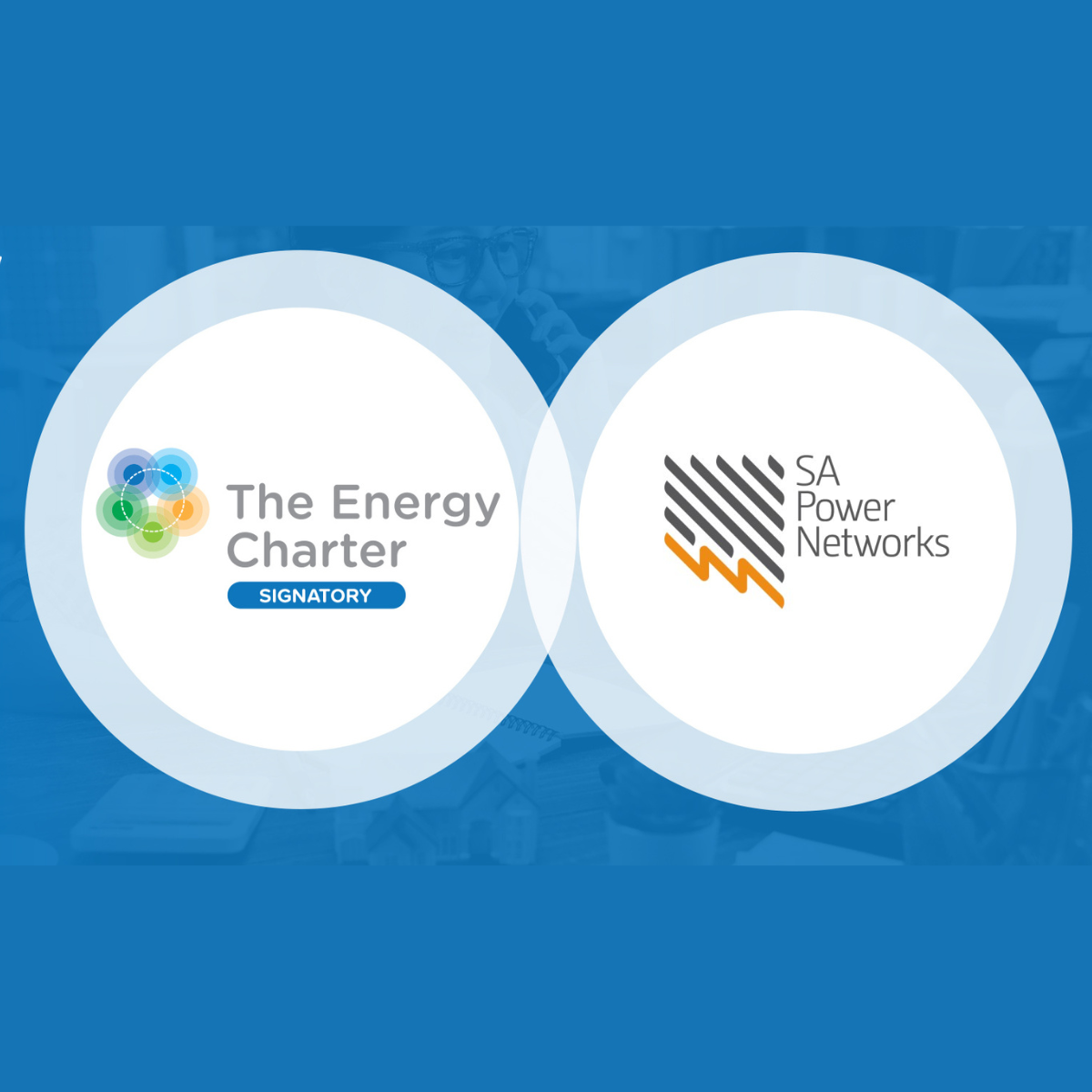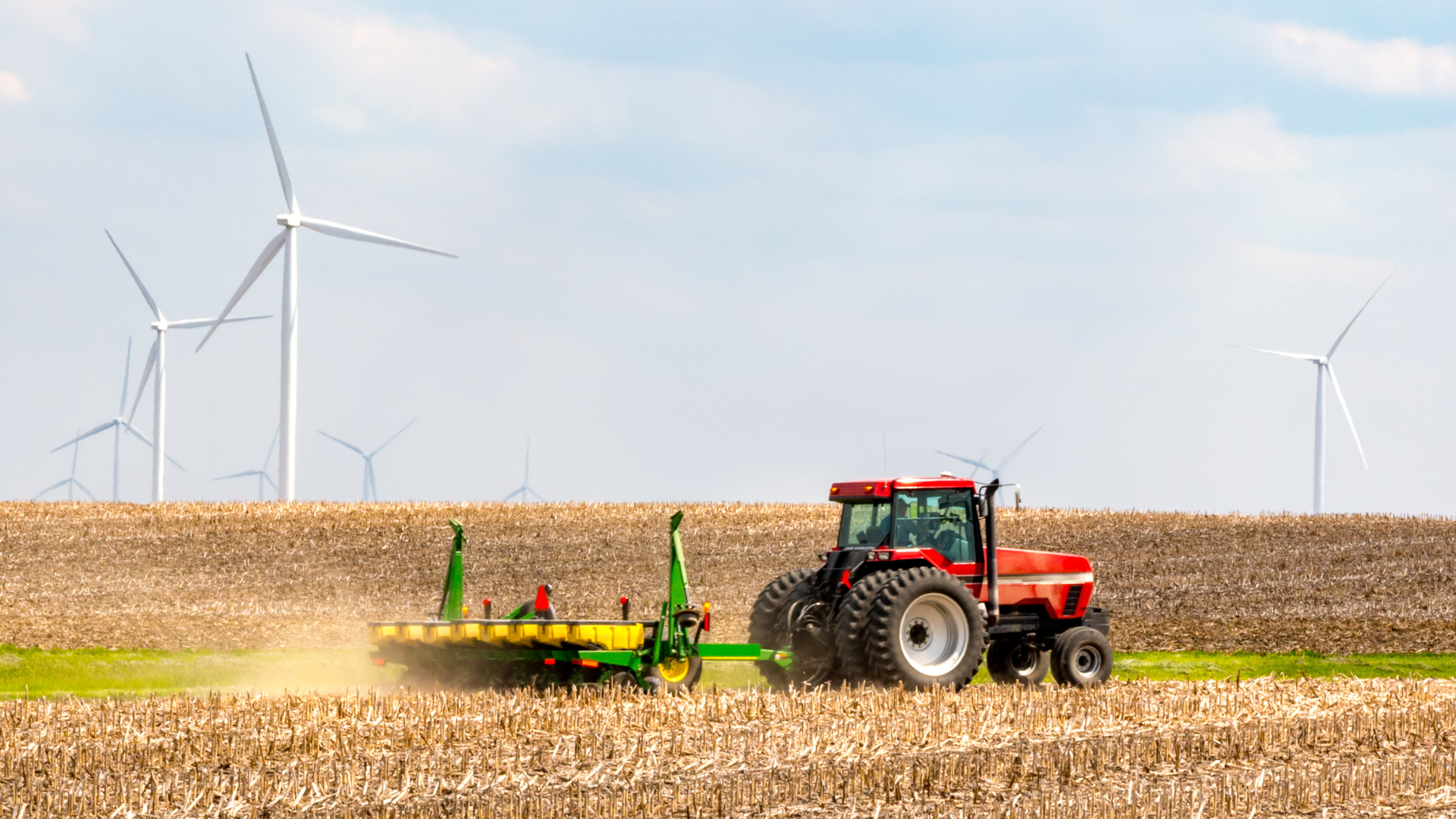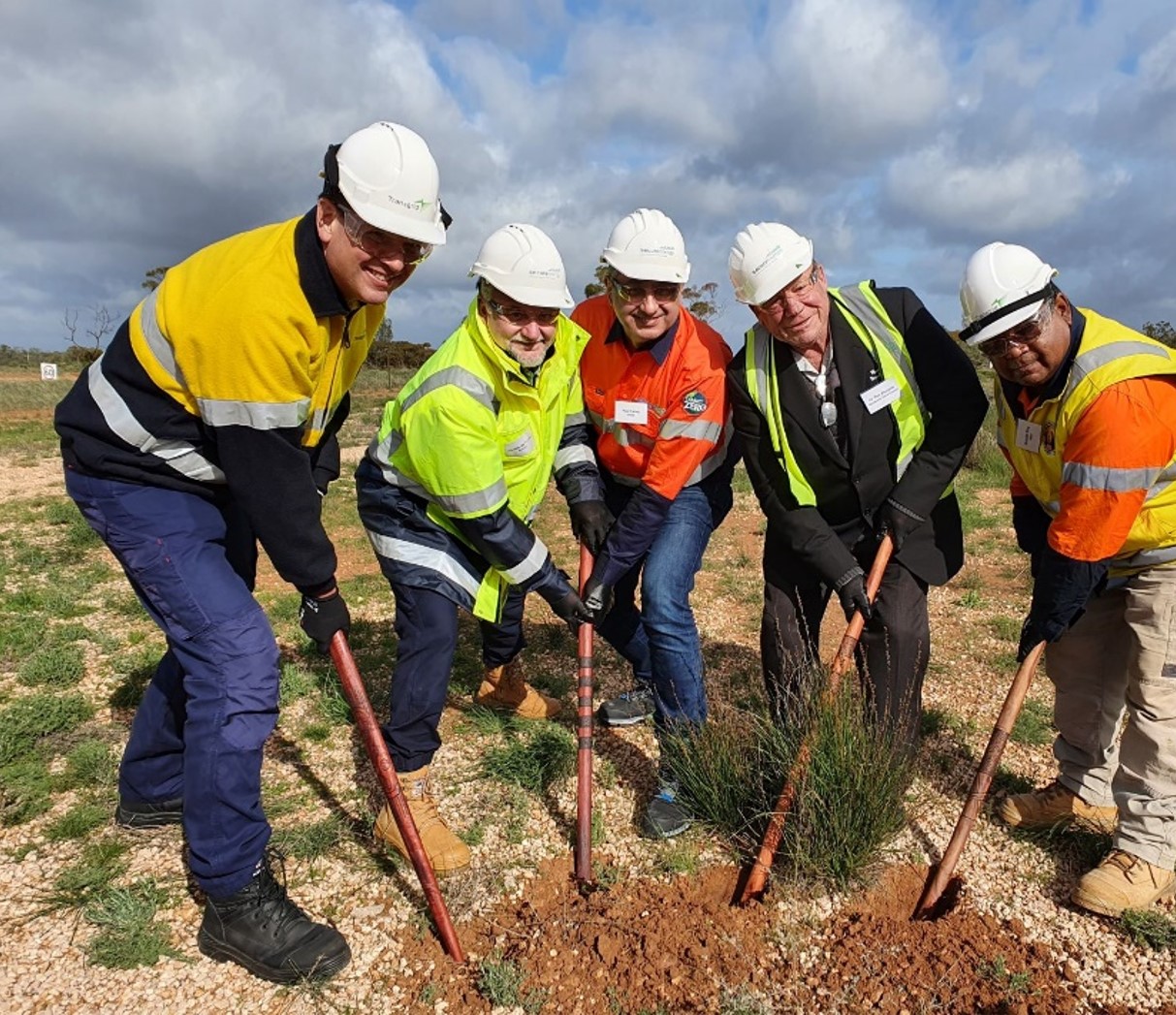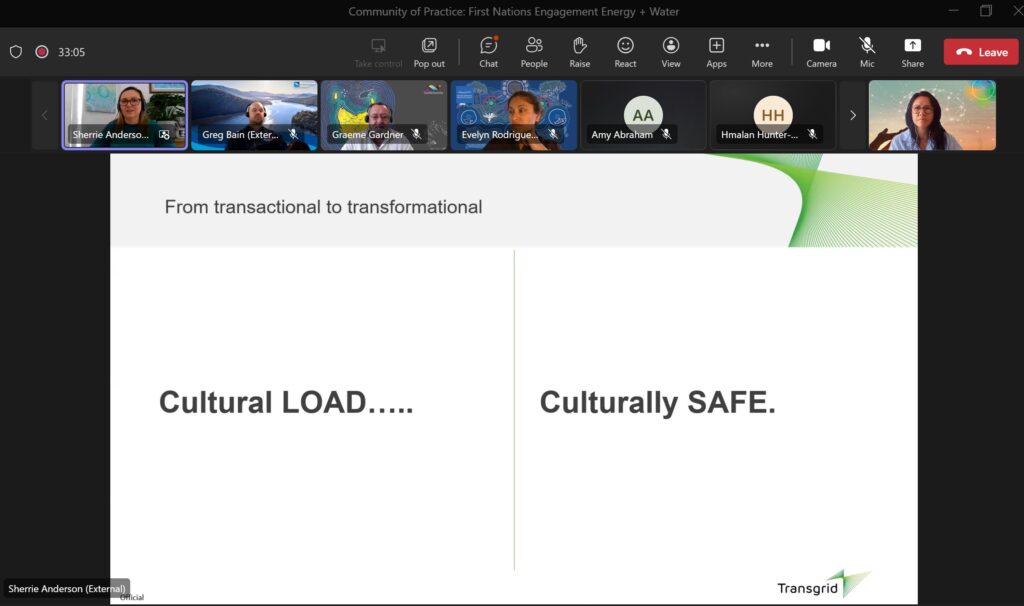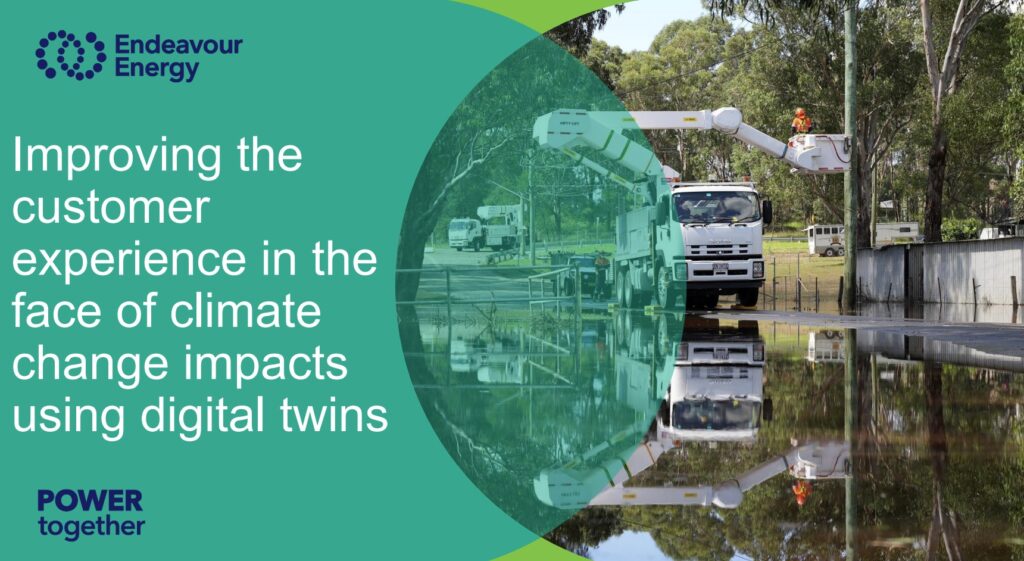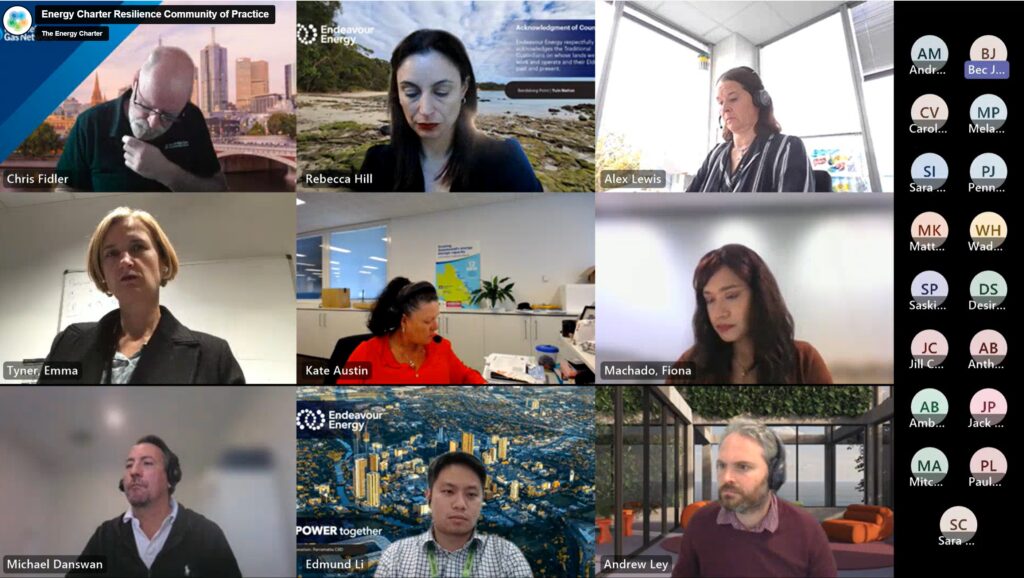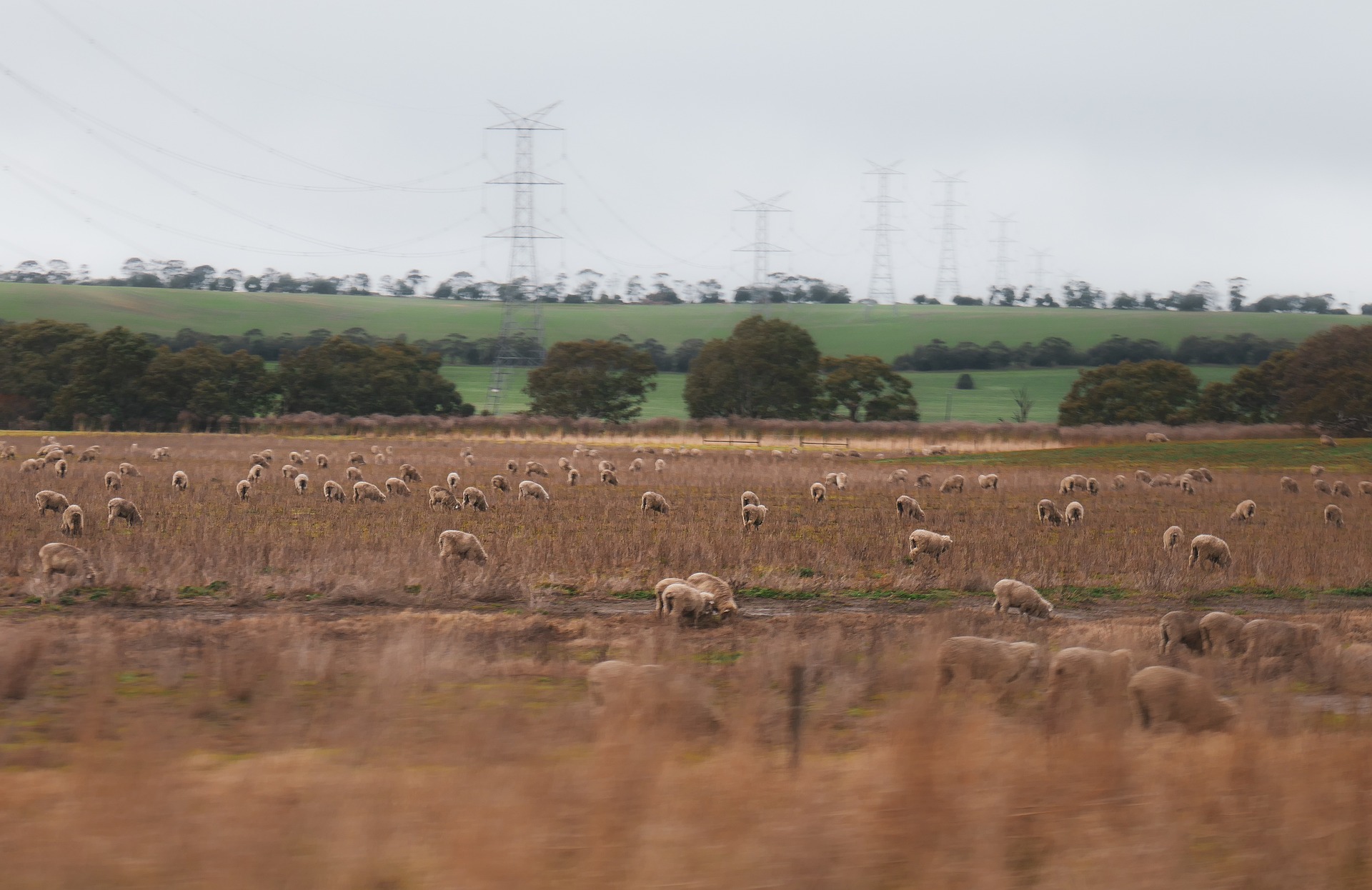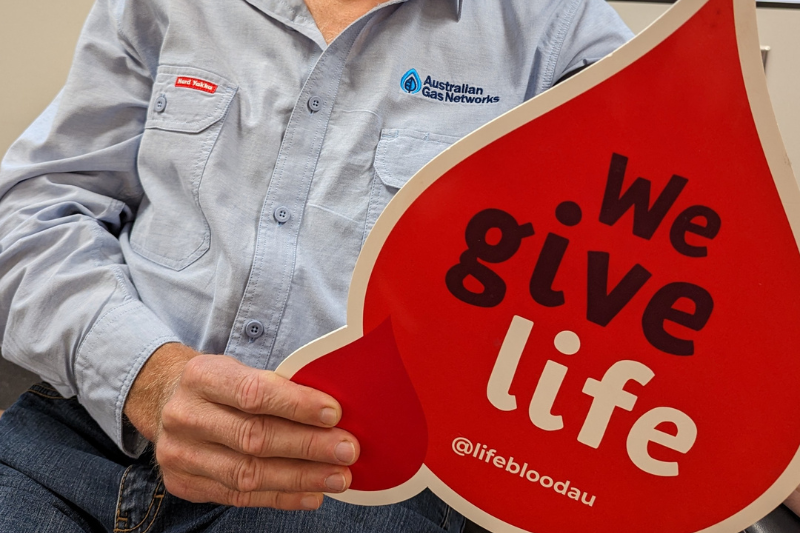Renewables in Ag – Where to from here?
On 22 June, the Energy Charter teamed up with the Ag Energy Taskforce and the 2023 National Renewables in Agriculture Conference and Expo to host a special Ag + Energy Roundtable.
The Roundtable event invited conference speakers and participants to reflect on the conference and ask the critical question; where to from here?
Together, we unpacked opportunities for farmers to play a greater role in decarbonising the grid and explored how key challenges could be addressed through collaboration between the ag and energy sectors.
What we heard
With over 300 delegates at the Conference and 60 at the Roundtable – the events provided an important opportunity for insight sharing between the Ag and Energy sectors, laying the foundations for future collaborations. Here’s a snapshot of some of the key themes.
Farmers, developers, energy transmission and distribution businesses alike are exceptionally keen to create meaningful collaborations to optimise benefits for host landholders and communities.
There were lots of ideas on how long-term positive impacts could be designed into projects by involving community stakeholders right from day one. These included:
- Impact-aware and community-governed benefit sharing programs
- On-farm energy audits and support to negotiate affordable energy contracts
- Legal and tax advice to support confident negotiation with renewable energy developers and transmission businesses
- Prioritising activities that provide long-term rural employment and enterprise creation.
Adopting circular economy principles at the design stage of new infrastructure projects was a key theme at the Roundtable. Participants asked how we might collaborate to:
- Ensure solar panels are recycled locally
- Re-use or re-purpose wind turbines from top to bottom
- Ensure farmers and communities’ benefit from the scrap steel when transmission towers are decommissioned.
Opportunities to enable regenerative farming practices and sustainable energy production through argi-voltaics were also a recurring theme, with many keen to see more research and development in this area.
#3 Land-use planning from top down to bottom up
Farmers and ag sector representatives emphasised the need for the farming community to be a meaningful part of the conversation about where new high-voltage transmission lines and other renewable energy infrastructure is planned, particularly where locations cross prime farmland. This includes engagement at all levels, from strategic system planning around the location of Renewable Energy Zones to the placement of infrastructure on individual properties.
Conversations echoed commitments made in the Energy Charter’s Better Practice Social Licence Guideline, which confirmed early engagement with landholders and community in route planning is essential to ensuring that wherever possible, transmission routes and methods are designed to minimise impacts.
With much enthusiasm to work together, both sectors also recongised the need to work productively with a range of other stakeholders, who also play a critical in ensuring an energy transition that benefits regional communities. Critical stakeholders included Local Government, energy regulators, new-tech developers, researchers and clean energy financers.
Showcasing Better Practice
The Ag + Energy Social Licence Roundtable is committed to showcasing Better Practice examples across the Ag and Energy sectors to inspire others. Take a look at what we shared at the June meeting.
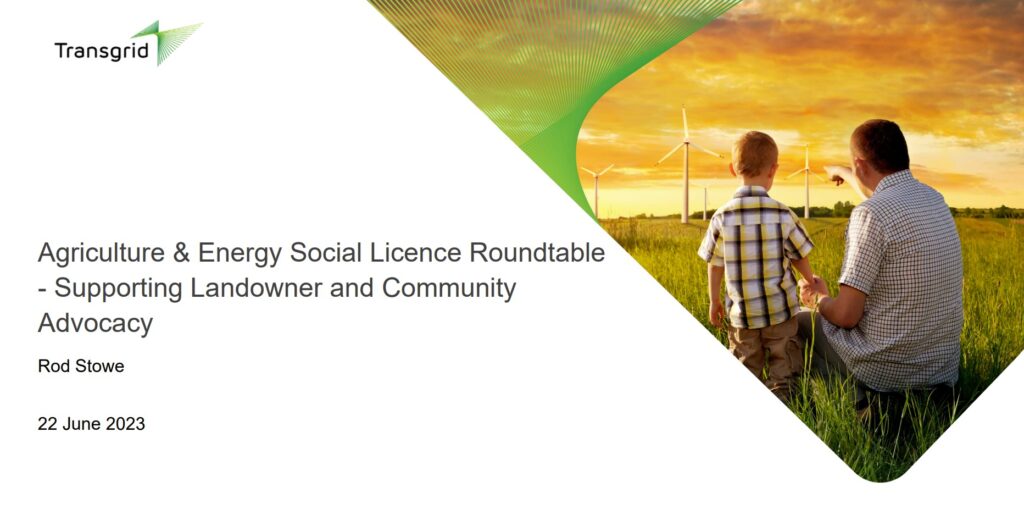
In late 2020 Transgrid created the Office of the Landowner & Community Advocate to assist the organisation to implement best possible landowner and community engagement practices on all its major transmission projects. Rod Stowe presented on how the Office is supporting Landowner and Community Advocacy in NSW.
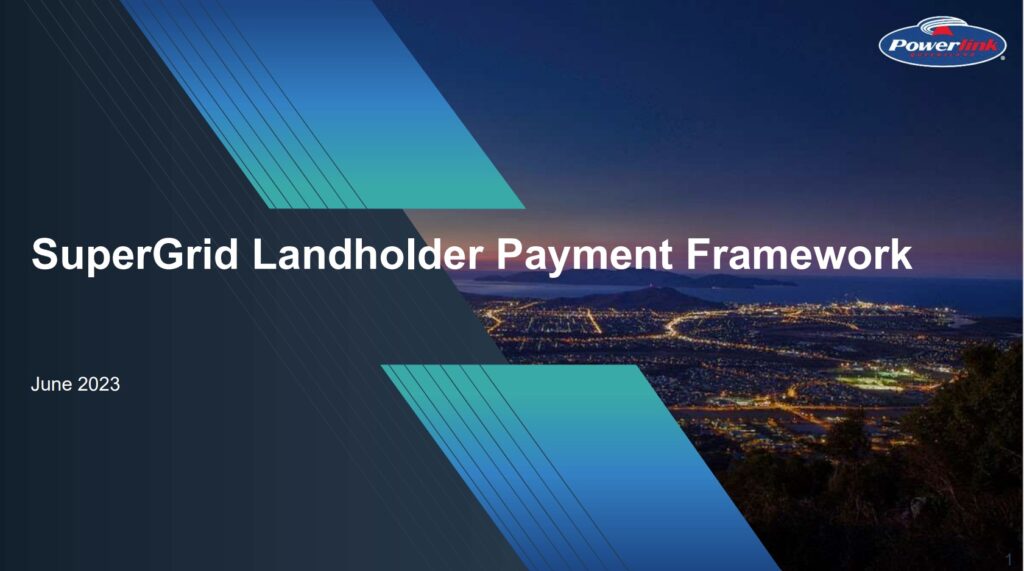
Dana Boxall, Powerlink Queensland provided an overview of the SuperGrid Landholder Payment Framework for landholders hosting new transmission lines. Significantly, it is the first payment framework in Australia to offer payments to landholders with properties adjacent to newly constructed transmission lines.
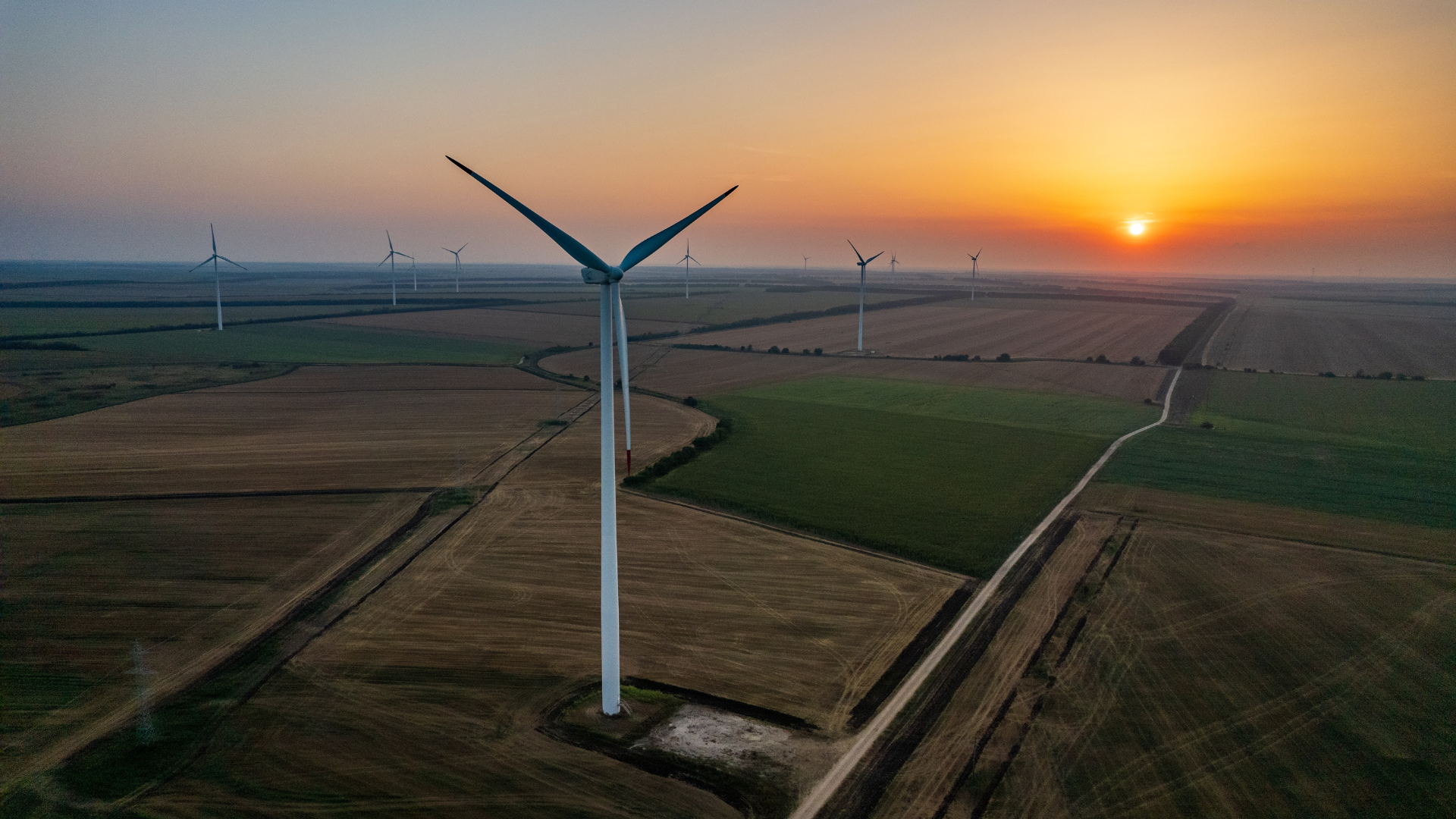
About the Ag + Energy Social Licence Roundtable
The Energy Charter hosts a bi-annual strategic roundtable with leaders from the energy and agriculture sectors to discuss strategic emerging issues in the energy transition, identify what’s working and areas for continuous improvement.
The purpose of the Roundtable is to deliver better landholder and community social licence outcomes through the energy transition, under the themes – ‘Ag as Energy Generators’, ‘Ag as Energy Users’ and ‘Ag as Energy Hosts’.
The Roundtable is independently chaired by Joy Thomas (formerly National Irrigators Association and convener of the Ag Energy Taskforce).
A final note collaboration
There is absolutely no doubt that transitioning to a low-emissions future needs collaboration with customers and across the energy sector. We must be willing to come together to share knowledge and insight from all sides and, importantly, to proactively co-design customer-led solutions.
At the Energy Charter our role is to encourage the difficult conversations and to amplify the customer and community needs. To bridge the gap between ‘hardto-do’ and ‘can-do’; to go beyond what any one of us could achieve alone. For us, the opportunity is to keep humans at the centre of the design and delivery of energy solutions; to navigate the changing needs of customers and communities as we transform to a cleaner energy future.
The Ag + Energy Social Licence Rountable is just one example of what can be achieved when businesses come together and work across sectors to unlock better practice.
First Nations Engagement Community of Practice: Sherrie Anderson learn by coming with me
Our First Nations Enagement Community of Practice was launched by Transgrid’s Yura Ngura Indigenous Advisory Team. The team drive reconciliation through inclusive and respectful engagement with Aboriginal and Torres Strait Islander peoples across the communities Transgrid operates in.
Sherrie Anderson, a proud Biripi/ Worimi woman and Manager of the Yura Ngura Indigenous Advisory Team, spoke about the journey and growth of her organisation in First Nations Engagement.
As Sherrie explains, “Think transformational, not transactional when it comes to First Nations Engagement”.
So how do you ensure your engagement with First Nations communities is transformational?
It is important to acknowledge that engagement with First Nations people is completely different from other forms of customer and community engagement.
“Organisations need to build trust and relationships before they earn the right for conversations” Sherrie advises.
“There is no rule book or cookie cutter approach. Every community and every engagement is different.”
The values of your organisation are crucial, not only for successful engagement but also in how it impacts the wellbeing of Aboriginal employees. This includes engagement for the purpose of developing a relationship which will make the difference for your Aboriginal employees feeling culturally safe and not taking on an excessive cultural load.
Sharing economic benefits with the community means looking beyond the ‘tick a box’ exercise, to see what else can be done to bring the community into the project. Sherrie gave an example of bringing members of the community into the project team to be Aboriginal mentors.
Insights for Better Practice First Nations engagement
Lessons shared…
- Shift your mindset to move away from ‘solutions listening’ (listening to find a solution). Instead listen to understand and build a relationship.
- Abide by the Principles of Free, Prior and Informed Consent, for more information check out this resource from the Australian Institute of Aboriginal and Torres Strait Islander Studies AIATSIS here.
- Set realistic expectations within your organisation particularly around funding and timelines. This also includes discussions around what success looks like both for your organisation and Aboriginal community or Traditional Owners. Be sure to set and monitor these measures.
- Celebrate the wins. Sherrie used a ‘win notebook’ to jot down all the little successes. Looking back at these not only restores morale of the team but is also a way to reflect with community on what has been achieved together.
- Non-Aboriginal employees have a role to play. Mentoring and guidance provided by Aboriginal employees, helps to remove barriers, and advocates for the values and protection of Aboriginal culture and communities. This is crucial to the success of First Nations engagement along with employee wellbeing.
Session resources
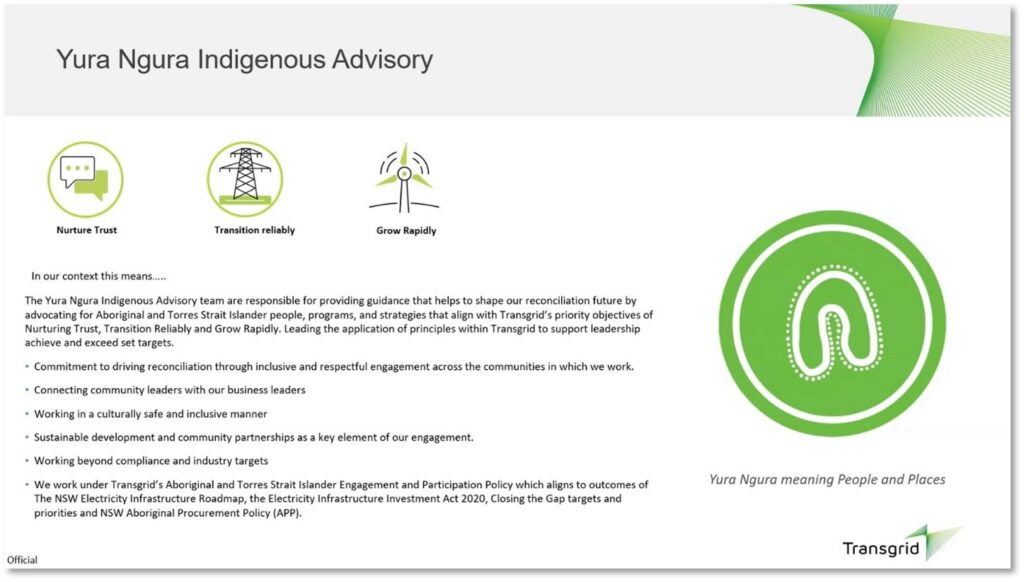
Have a look at Transgrid’s Yura Ngura Indigenous Advisory Team and their journey towards reconciliation through inclusive and respectful engagement with Aboriginal and Torres Strait Islander communities.
Learning to develop each individual relationship with First Nations communities means understanding that all experiences are different. As Sherrie explained, as ‘a saltwater woman’ heading into ‘muddy waters’, she was new person to that community and had to earn their trust.
About this Community of Practice
The First Nations Engagement Community of Practice is led by First Nations thought leaders across the energy and water sectors. It is an initiative that works to improve engagement practice with Aboriginal and Torres Strait Islander customers and communities in collaboration with the Water Services Association of Australia (WSAA)
Every second month, the Energy Charter together with WSAA host the community of practice, learning from First Nations-led discussions that builds on the three stages of the Better Practice First Nations Community Engagement Toolkit.
- The Foundations stage prioritises cultural training and awareness as the first step of the better practice journey.
- The Building Blocks stage develops practice recognising that engagement with First Nations communities is different to other engagement.
- The Ongoing Steps stage helps organisations move away from opportunistic engagement towards long-term trusting relationships.
Learn more on our dedicated First Nations Better Practice Community Engagement page here.
Resilience Community of Practice – Using new tech to improve customer outcomes
In the Energy Charter’s first-ever Resilience Community of Practice, we heard from Endeavour Energy on how they collaborated with others and used new-tech to deliver better outcomes for flood-affected communities.
In 2022, significant rainfall caused flooding in parts of regional and rural NSW, damaging the electricity network and causing wide-spread power outages.
Endeavour Energy’s digital twin platform processed large amounts of data quickly to enable better, faster and more accurate engineering decisions. It works by using LiDAR (Light Detection and Ranging) data captured from helicopters, fixed-wing aircraft, and vehicles and links it with network data to generate an engineering-grade digital 3D network model.
During the floods, Endeavour Energy used this new technology to simulate the impact of major flooding in the Hawkesbury and Nepean Rivers.
Rather than wait for visual inspections after the floodwaters receded, the digital twin modeled flood impacts to eliminate 300 hours of inspection time and enable a targeted response to the customers that needed assistance the most.
Endeavour Energy is the first electricity network in Australia to deploy an engineering grade digital twin to combat the impacts of climate change and extreme weather events.
Better communication and customer experience
- The modelling provided by the digital twin enabled the business to know where customers were likely to be impacted by flooding ahead of time, so targeted communication could promote safety and preparedness.
- Social media was strategically focused to ensure widespread communication across impacted communities. The community responded, appreciating real-time news and two-way engagement
- Digital communication was supported by teams on the ground, including community liaison officers at dedicated storm centers. With the help of the modelling data, these teams were able to provide real-time and accurate communication, including on road closures and likely restoration times
- Informed on-ground teams and real-time information on digital channels enabled a community network to share reliable information with each other. Those that could access digital resources helped by printing and sharing information with others.
Session resources
Explore Endevour Energy’s response to the 2022 floods in NSW, including how they used digital-twin technology to reduce inspection time, improve safety, support real-time communication, and target their response to the customers that needed assistance the most.
Improving the customer experience in the face of climate change impacts using digital twins also extends to managing bushfire impacts.
Energy Charter Signatories, Collaborators and Supporters can access the full session recording via The Source to learn more.
About this event
This event is part of the Energy Charter’s Resilience Community of Practice dedicated to helping customers and communities better prepare, respond and recover from disaster events.
Every second month, the Energy Charter host a Community of Practice, including expert-led discussions building on the topics covered in the Energy Charter’s Disaster Response Playbook:
- Communication and Education – where do communities get information, how is it delivered and who needs to know? This includes sharing learnings on successful communication and education campaigns as an essential aspect of disaster preparedness, response and recovery.
- Coordination and Collaboration – what are the opportunities to better work together across the energy sector and within the broader eco-system? This includes better practice case studies on successful collaboration.
- Planning and Preparedness – what is our role in building community and individual capacity to plan and prepare for a disaster? This includes opportunities to build resilience ownership and literacy within communities, so they can better respond in a disaster.
- Learning loops – It’s essential to share back to enable continuous improvement. This includes sharing insights from recent disaster events and building a resilience learning library.
June 2023 News Update
In this June 2023 News Update, CEO Council Chair, Guy Chalkley highlights the upcoming launch of the Knock to Stay Connected Customer Code, the roll out of National Concessions Awareness and Engagement Campaign in partnership and much more.
Unlocking Better Practice in Social Licence
What does social licence look like in practice?
Love it or loath it, the term ‘social licence’ is being discussed in the board rooms of energy businesses across Australia. It’s also a hot topic on the lips of government, energy regulators and industry bodies as ‘once in generation’ transmission development projects progress across our regions.
For many, the question being asked is simple: what does co-existence and shared value for transmission and agricultural landholders look like in practice?
Through the Energy Charter – a unique coalition of like-minded energy organisations with a shared purpose and passion for customers and communities – transmission businesses Transgrid, Powerlink Queensland, TasNetworks, AusNet and ElectraNet have collaborated with the agricultural sector to answer this question.
Energy Charter Executive Director, Sabiene Heindl and Director Innovation, Amy Abraham who led the collaboration, offer their insights on unlocking better practice in social licence.
What we heard
Working closely with a Community Outcomes Group (COG) of landholder and community representatives, and research partner KPMG Australia, the Energy Charter’s social licence research included a survey and deep-dive interviews with agricultural landholders across Queensland, New South Wales, Victoria, South Australia and Tasmania, who all shared their experiences of how transmission infrastructure has, or is expected to, impact them.
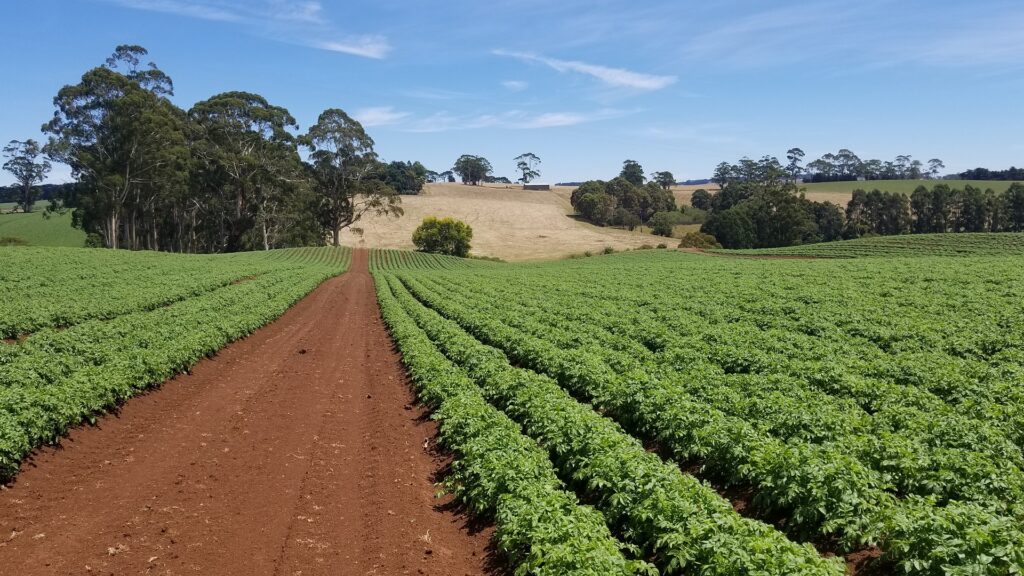
Significantly, the research validated 33 individual impacts, with visual impacts, financial loss and biosecurity risks most significantly felt by landholders. In particular:
- 58 percent of surveyed landholders said that transmission infrastructure will result in a direct loss of farmable land or disruption to their land productivity.
- 60 percent also believe that transmission infrastructure will impact their use of machinery or equipment.
Overall, landholders also expressed disappointment and frustration with the quality of engagement they had participated in.
However, it’s not all bad news. From this important insight work, the Energy Charter’s Better Practice Social Licence Guideline was born.
By validating impacts and identifying opportunities to improve outcomes for agricultural landholders, the Better Practice Guideline will support transmission businesses to better understand and act on, the factors that contribute to building trust and maintaining social licence with agricultural landholders and their communities.
The evidence-based Better Practice Guideline reflects a genuine and shared commitment from industry collaborators to ensure that the lived experiences of agricultural landholders remain front and centre in informing the industries’ collective understanding of both impact and opportunity.
The Better Practice Guideline provides a checklist of practical actions and activities required to minimise impact and meet landholders’ expectations, along with a range of better practice opportunities, detailing the actions and activities transmission businesses should look to progress, align to and build on, to deliver shared value and build social licence.
In many cases, these actions align to the existing commitments or aspirations of the transmission businesses involved, with the ‘lighthouse’ examples featured showcasing where innovative practice is already underway to better manage impact and provide benefit to landholders and their communities.
The social licence connection
The Better Practice Guideline were developed through the frame of social licence.
By applying a social licence lens, we were able see how individual impacts, actions and relationships add up and affect the building of trust and acceptance.
Importantly, through this unique collaboration we were also able to bring consistency to the energy industry’s understanding of how social licence is built and maintained.
The concept of a social licence to operate emerged in the late 1990s, as affected communities and governments required the mining industry to increase its focus on social obligations and corporate social responsibility programs. It is now considered a key condition for many other industries, including in the energy sector.
The Better Practice Social Licence Guideline defines social licence to operate as a concept that reflects community acceptance or approval around the operations of an organisation and its developments. Community acceptance comes from prioritising trust, delivering overall positive impact and is granted and denied by the community in line with their social, political and economic conditions. However, establishing social licence to operate is not simple due to it being based on the diverse values, interests and concerns that contribute to community expectations and as such requires the consideration of relational aspects between the industry and communities, industry affects, community understanding and confidence in a particular project.
Informed by research and discussions with landholders, four key principles have been identified as fundamental to transmission businesses building and maintaining social licence with affected landholders and their communities:
- Procedural fairness: giving affected landholders and communities reasonable opportunity to engage with decision making that can, or will, impact their lives and livelihoods
- Distributional fairness: considering equity across tangible and intangible outcomes for affected landholders and communities.
- Stewardship: acting as stewards of land and communities through the planning and development of transmission infrastructure.
- Partnership: working with landholders and their communities in partnership to deliver positive outcomes for people and land.
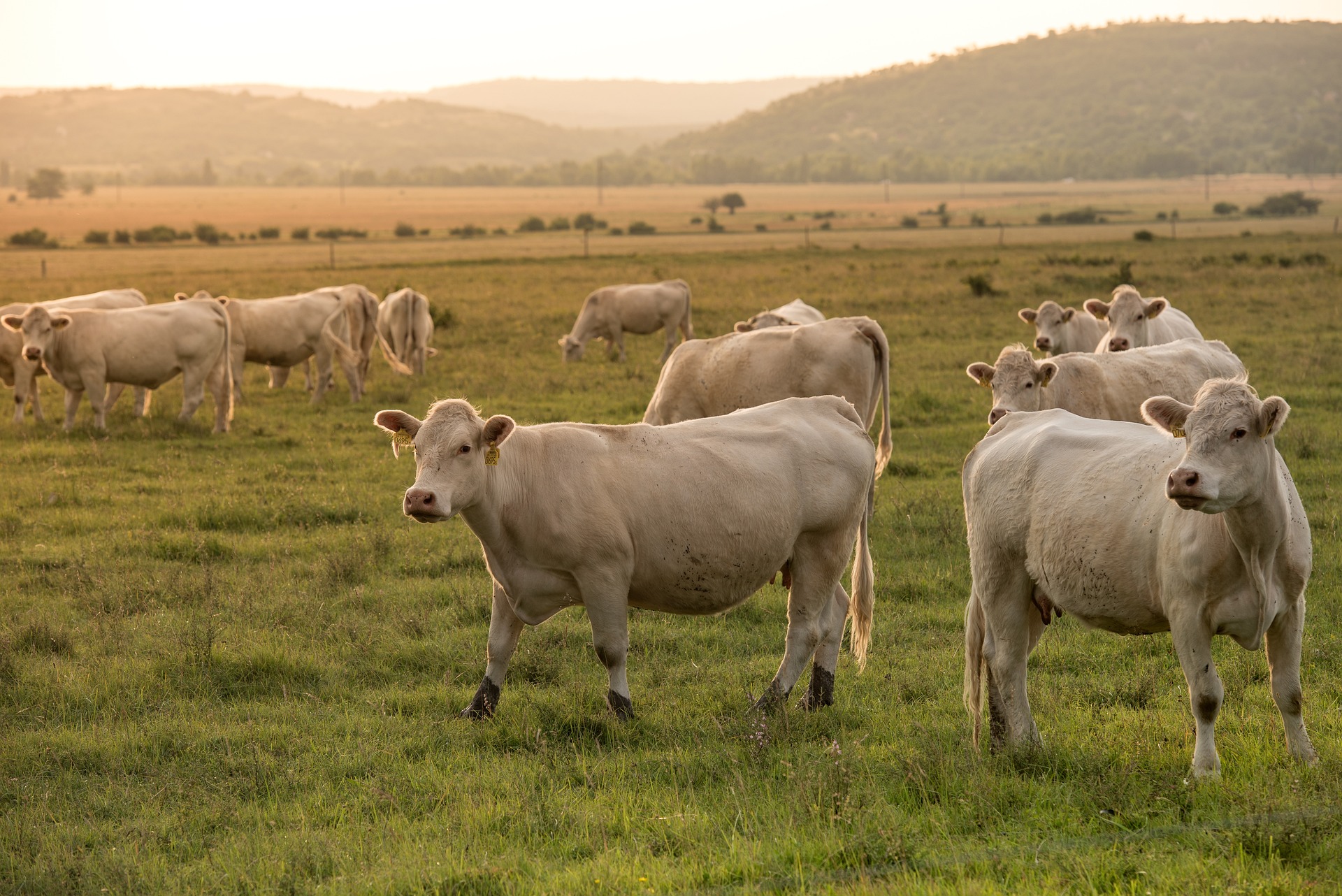
Key takeaways
As Australia moves rapidly towards our renewable energy future, a growing number of agricultural landholders are being approached to host electricity transmission and other energy infrastructure, on their land.
Energy Charter signatories recognise that these transmission development projects, as well as the maintenance of existing infrastructure, can impact agricultural operations and lives and livelihoods of agricultural landholders. They also understand that they have a responsibility to recognise and minimise these impacts and work towards shared value outcomes for everyone.
In simple terms, this means applying a genuine and consistent commitment to mitigating significant impacts, providing meaningful benefits and meeting the engagement needs of landholders and their communities.
However, social licence exists on a spectrum and is dynamic. It can be weakened and strengthened by the actions of businesses and communities at any point within a project lifecycle. For long, linear transmission projects that can run for hundreds of kilometres, impacting on dozens, if not hundreds of unique communities, acceptance, understanding, trust and confidence in an organisation and its developments can vary significantly. Social licence lost in one community often influences how the organisation and its developments are viewed in their entirety.
Critically, landholders’ experience of transmission infrastructure developments and their impacts is significantly influenced by the way they are engaged. Landholders strongly believe that transmission businesses need to spend time getting to know the land, the people and their needs to facilitate better outcomes for all parties.
It’s also critical to acknowledge transmission investigations, construction and maintenance activities can have serious impacts on land condition, productivity and livestock if potential disturbances are not proactively and diligently managed.
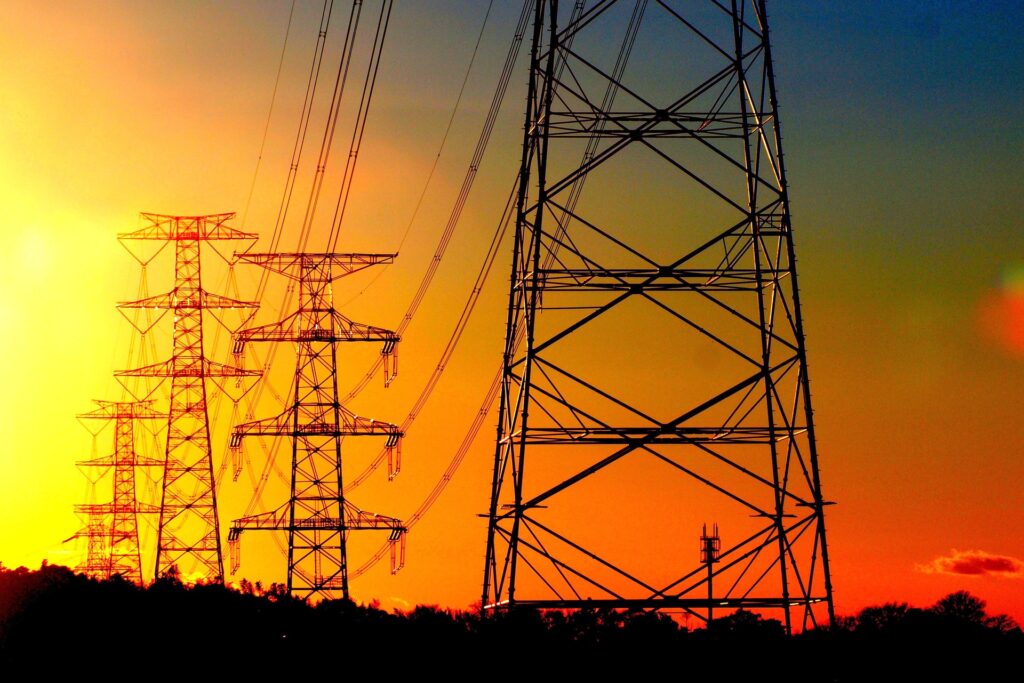
A final note collaboration
There is absolutely no doubt that transitioning to a low-emissions future needs collaboration with customers and across the energy sector. We must be willing to come together to share knowledge and insight from all sides and, importantly, to proactively co-design customer-led solutions.
At the Energy Charter our role is to encourage the difficult conversations and to amplify the customer and community needs. To bridge the gap between ‘hardto-do’ and ‘can-do’; to go beyond what any one of us could achieve alone. For us, the opportunity is to keep humans at the centre of the design and delivery of energy solutions; to navigate the changing needs of customers and communities as we transform to a cleaner energy future.
The Social Licence Better Practice Guideline is just one example of what can be achieved when businesses come together and work across sectors to unlock better practice. We encourage others to take the lead from this collaboration; to take a whole-of-sector view; to collaborate, innovate and strive for better.
The Better Practice Social Licence Guideline is available here.
May 2023 News Update
In this May 2023 News Update, CEO Council Chair, Guy Chalkley highlights the upcoming launch of the Better Practice Social Licence Guideline with an impressive panel across the agricultural and energy sectors, the First Nations Community Engagement Toolkit launch which includes insights and conversations to highlight practical ways to better engage First Nations communities, our Concessions campaign and more.
#BetterTogether Blood Drive 2023
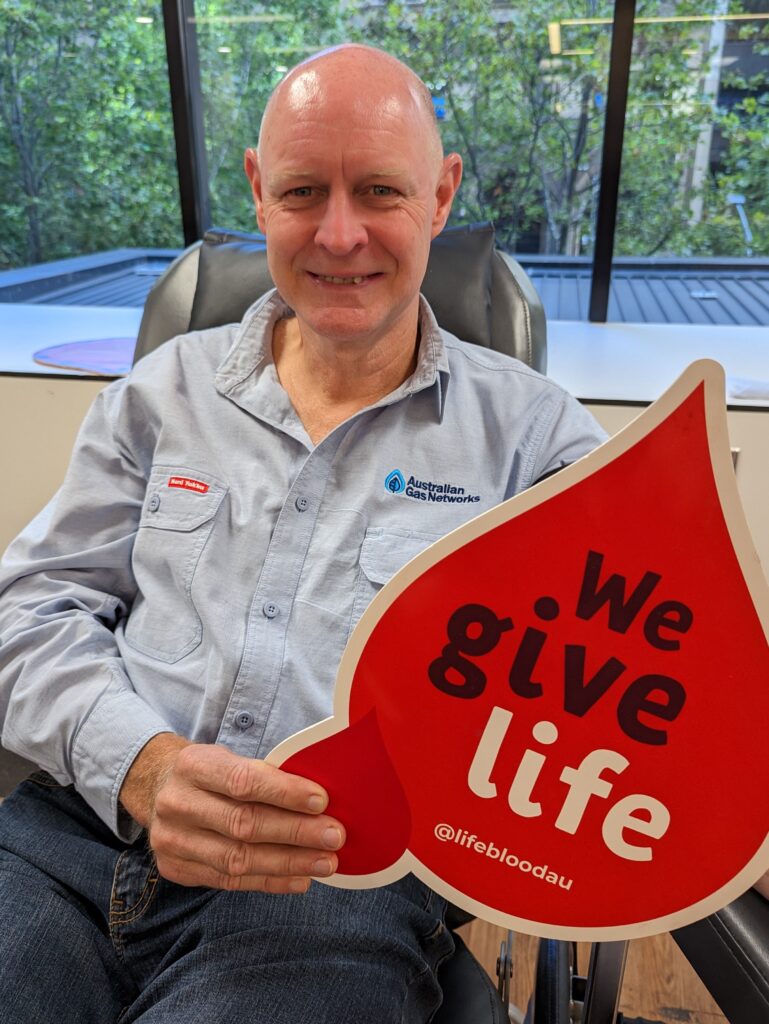
What's the Energy Charter #BetterTogether Blood Drive?
Each year, the Energy Charter invites all Signatories, Collaborators and Supporters to participate in the annual Energy Charter Blood Drive, an initiative which unites organisations across Australia to give life by giving blood and plasma.
Australia needs 33,000 donations every week. From 1 February to 30 April 2023, we asked our energy businesses to give blood like life depends on it!
This year’s challenge goal was to make 1,400 donations collectively, which has the power to save around 4,200 lives: 1 blood donation has the power to save 3 lives.
How’d we do against our shared goal?
While we didn’t make it to 1,400, together we made a very solid contribution to the blood bank with 1,313 donations made. This equates to 3,846 lives saved.
Every donation, from every team is valued – not only from Lifeblood, but by the many recipients and their loved ones who are impacted by serious health conditions.
The 2023 Blood Drive leader board
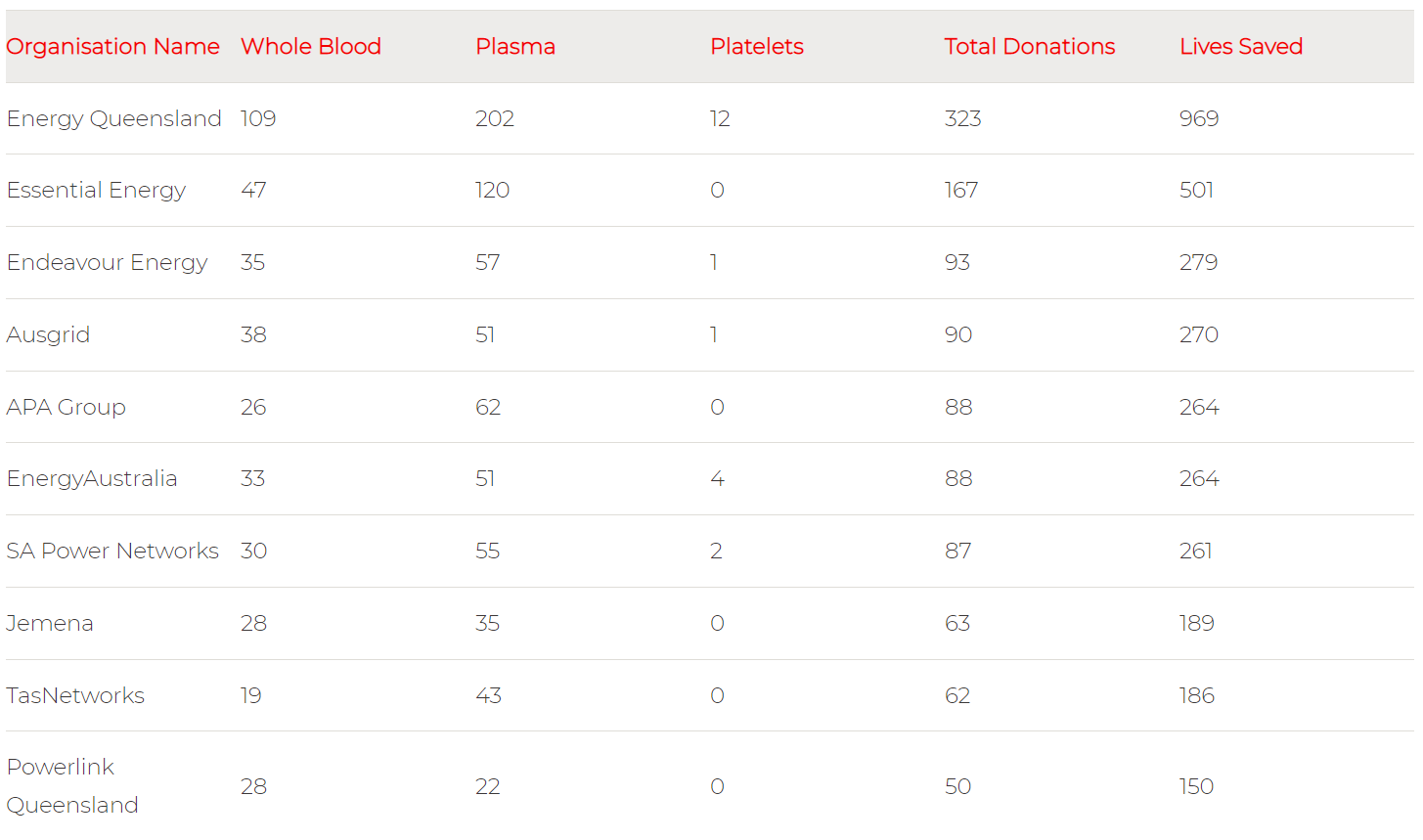
For a full list of all donations, please visit Lifeblood challenges.
While we don’t mind a bit of friendly competition; at its core the blood drive is really just another way we can come together around a community need, and each play a part in contributing to a solution.
…Because we are #BetterTogther.
To everyone involved, once again, thank you for supporting this year’s blood drive!
How the Blood Drive is making a difference
Australia needs over 1.7 million donations every year to meet demand: that’s three every minute. Below are some of the ways blood donations are used.
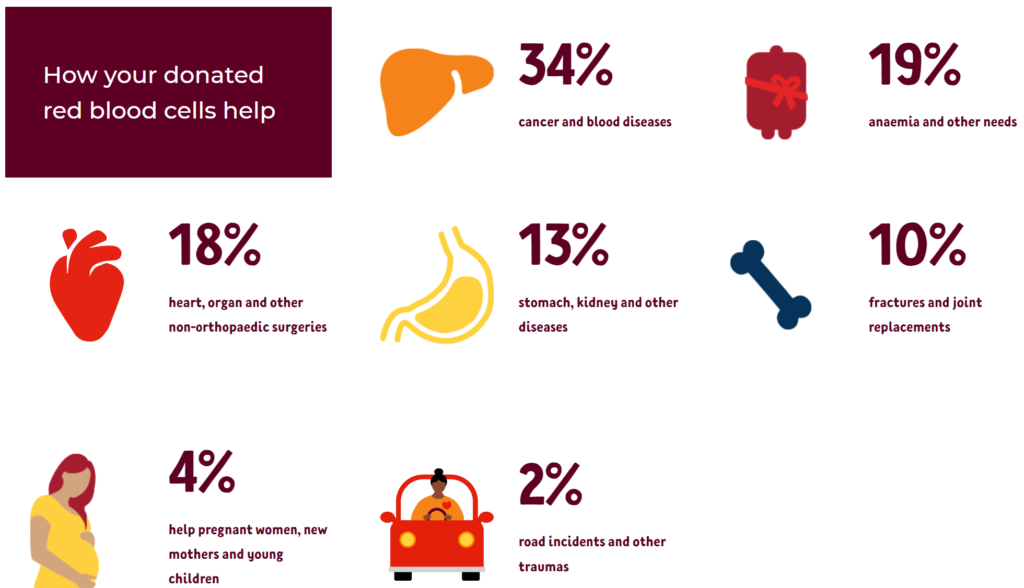
Image: Australian Red Cross Lifeblood, Why donate blood | Lifeblood
Want to donate?
If you’re ready to give life, start by checking availability at your nearest donor centre, whether you’re home or away.
April 2023 News Update
In this April 2023 News Update, CEO Council Chair, Guy Chalkley highlights our Concessions Campaign, AG + Energy Social Licence Roundtable as well as updates on our Collaboration on Biodiversity.
Community Benefit Sharing: Insights from RE Alliance
Last month, the Energy Charter’s passion for customers and communities was highlighted with our signing of a sector-first Collaboration Memorandum of Understanding (MoU) with RE Alliance.
RE-Alliance is an independent, not-for-profit advocacy organisation working to secure an energy transformation that delivers long-term benefits and prosperity to regional Australia.
This month we’ve invited Padmapriya Muralidharan, Communications Manager at RE-Alliance to share her thoughts on what an energy transition that benefits communities looks like, including the important role of Community Benefit Sharing programs.
Australia’s renewable energy transformation is bringing clean energy to power our homes, communities, businesses and industries.
Regional Australian communities who host the energy infrastructure are vital to how and how quickly we transition. It is crucial to consider that many host communities are witnessing the first ever, large-scale industrialization of their landscape. In the renewables industry, community benefit sharing programs have become an important output of community engagement programs, where developers can respond to regional communities’ aspirations by both mitigating project impacts but also sharing financial benefits with those communities evolved as an important measure to gain social licence in. Done well, such programs strengthen the relationship between developers and communities, which is especially important for those developers that will operate the asset for the long term. Most than just a way to deliver social licence for a project, benefit sharing programs are a way for host communities to build resilience and thrive.
A whole-of-community approach to energy in regional communities
As Australia approaches one hundred wind farms in operation, we can see wind energy’s pioneering role in the development of community benefit sharing programs. RE-Alliance’s 2019 report on wind energy in regional Australia investigated a range of benefit sharing mechanisms such as landholder payments, neighbour payments, community enhancement funds and community co ownership. Together, these funds were estimated to contribute between $56.5 and $61 million annually to regional communities. We have seen communities with existing capacity and strong leadership deploy these funds strategically to move towards their self-determined, long-term vision.
With the energy ecosystem evolving to include new modes of generation and increased transmission sited in large Renewable Energy Zones (REZs), the amount of funds contributing to regional communities is increasing. This is an opportunity to provide long-term investment to build strong and resilient regional communities. To grasp the unfulfilled potential of community benefit sharing programs we need to shift these programs from the current project-by-project, piecemeal approach and move to a whole-of-community approach.
Benefits of a whole-of-community approach
The whole-of-community approach delivers two important benefits. Firstly, it enables communities to move from only responding to small-scale or short-term requirements to addressing long-term needs, including capacity building. Secondly, it creates the space for collaboration and allows the community to identify their long-term vision, addressing the impacts of renewable energy developments and engaging with the opportunities such developments present.
The role of the host community in the community benefit sharing arrangements is important. When host communities play the role of active partners, with agency and capacity to direct community benefit arrangements for their communities, this creates an environment for increased social cohesion and more equitable sharing of benefits, ultimately strengthening the social and economic fabric of regional Australia
An energy system for all stakeholders
Our energy transition requires speed, but also justice. Community benefit sharing programs, done well, can deliver both a fast and just transition. With community benefit sharing, we have the opportunity to create an energy system that works for all stakeholders across the value chain – from individual hosts, communities, industry and the energy consumer.
RE-Alliance is conducting a study on the current state of community benefit sharing programs. The findings of this study will be released as a report that aims to improve community benefit sharing arrangements. If you would like to participate in the study, please contact padmapriya@re-qlliance.org.au.

